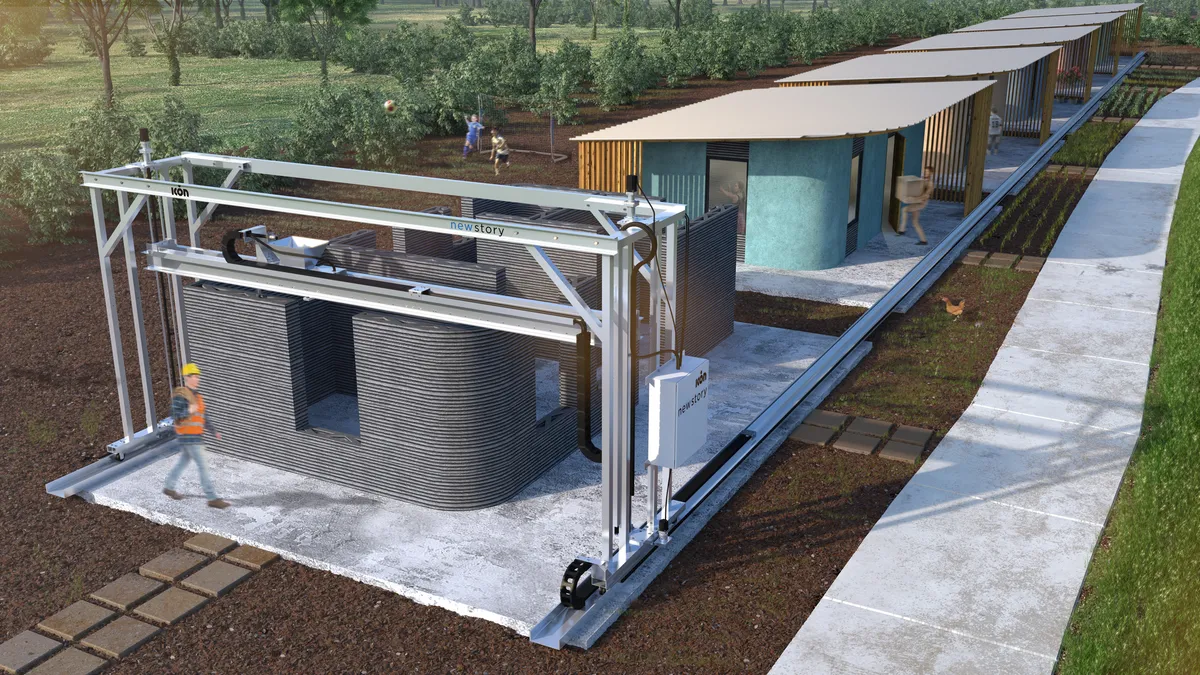A mesmerizing process of tiny particles shooting out of a robotic device and sticking to each other, layer after layer, is expected to revolutionize city construction and how cities function. Welcome to the world of 3-D printing.
The process has been used over the years to build a slew of small- to medium-sized objects from a variety of materials in an array of industries, but using the application to construct city structures remains in its nascent phase. The United States has been slower to adopt this disruptive force for infrastructure compared to other countries, in part because of U.S. regulations and permitting restrictions.
Changing cityscapes
Dubai has been a leader in imagining ways to utilize 3-D printing, such as for an office building. The city’s Roads and Transport Authority (RTA) launched initiatives to build transportation infrastructure, including a marine station, as part of the Smart Dubai plan. A couple of years ago the RTA announced plans to 3-D print parts for the Dubai Metro’s assets, including ticket vending machines and entry gates. The measures align with the Dubai 3-D Printing Strategy put forth by Dubai ruler and UAE Prime Minister Sheikh Mohammed bin Rashid Al Maktoum, which aims to make the city a hub for the technology through regulations requiring every new building to be 25% 3-D printed by 2025.
Dutch entrepreneurs just revealed the world’s first 3-D printed steel bridge, set for installation in Amsterdam. That 40-foot structure isn’t the first 3-D printed bridge, but is the first steel one. Last year, the same start-up, MX3D, unveiled a 3-D printed, 26-foot concrete bridge in the Dutch city of Gemert.
Some structures, like a bus stop in China, are even 3-D printed from recycled materials. This concept has the potential to alter the way cities view waste and recycling if they can funnel certain materials like plastics to new markets.
The technology also has been suggested for maintaining and reinforcing existing infrastructure by printing just the materials necessary to repair elements like masonry, railways or even roadway potholes.
Boosting housing stock and sustainability
Housing is one of the prime areas where 3-D printing solutions could solve some problems cities currently face. "We started with houses because … nobody is writing articles about the global skyscraper crisis or global restaurant crisis. There really is a multi-layered problem with housing in the world," said Jason Ballard, one of the three co-founders of Icon, an Austin-based 3-D printing startup.
The business' founders believe there are three fundamental housing issues: affordability, availability and sustainability. Icon researched a variety of architectural technologies before landing on 3-D printing due to its promise in the three areas of concern. Simply reducing the amount of time to build the average U.S. home — which the National Association of Home Builders estimates to be six months — drastically reduces overall construction costs. The construction speed also allows for rapid increases in housing supply.
Icon showcased a 3-D printed house at South by Southwest last month, where it announced a partnership with the nonprofit New Story to build homes for people in developing countries, starting with El Salvador. "We are super excited. Usually the world's poor are the very last people to get access to emerging technologies," Ballard said. The goal is to build 600- to 800-square foot homes in less than 24 hours, for less than $4,000 each. The business is starting with the El Salvador project because "the housing needs in the developing world are so much more urgent and existential and pressing than they are in America," he said. Still, he expects Icon to begin creating houses in the United States next year.
Icon prints structures from a proprietary concrete type of material because concrete is cheap, well-tested, strong and more energy-efficient in the long run than other materials. "Concrete has a high thermal mass. It really helps regulate the way heat flows in and out of a space. It will keep a space more comfortable longer and with less energy investment," Ballard said.
A concrete structure also is more resilient to environmental conditions and disasters than those constructed from many other materials like wood and drywall. That's particularly important to Ballard, whose childhood home was destroyed by a hurricane.
"If I paid you a million dollars, you almost could not invent a less resilient material than drywall. The fact that we build entire buildings out of drywall in areas that are known for wildfire problems or hurricane and flooding issues is kind of insane," he said.
Other materials' lack of durability and resiliency leads to many traditional houses requiring frequent revamps or upgrades; some owners even choose to completely tear down houses before their expected lifespan is up. "In terms of energy and resources, that's practically treating homes like a disposable commodity. That is not a sustainable or wise situation," Ballard said.
In addition to transforming the way housing is constructed, Ballard believes 3-D printing will fundamentally change cities' permitting processes. Because 3-D printing is an automated, repeatable process performed by robotics, less human error exists. Less inherent error could lessen the need for highly detailed on-site home inspections, which ultimately could reduce regulatory costs associated with new building construction. "There are places [in America] where 25% of the cost of building a home is permit fees and taxes. If you have a housing shortage and affordability crisis, that is obscene," Ballard said.
As an added bonus, 3-D printing offers greater design freedom compared with conventional construction methods. "We could make a spiral almost as easily as regular building," Ballard said. "We hope you will see cities become not only more affordable, but also more resilient and beautiful" through 3-D printing.
























